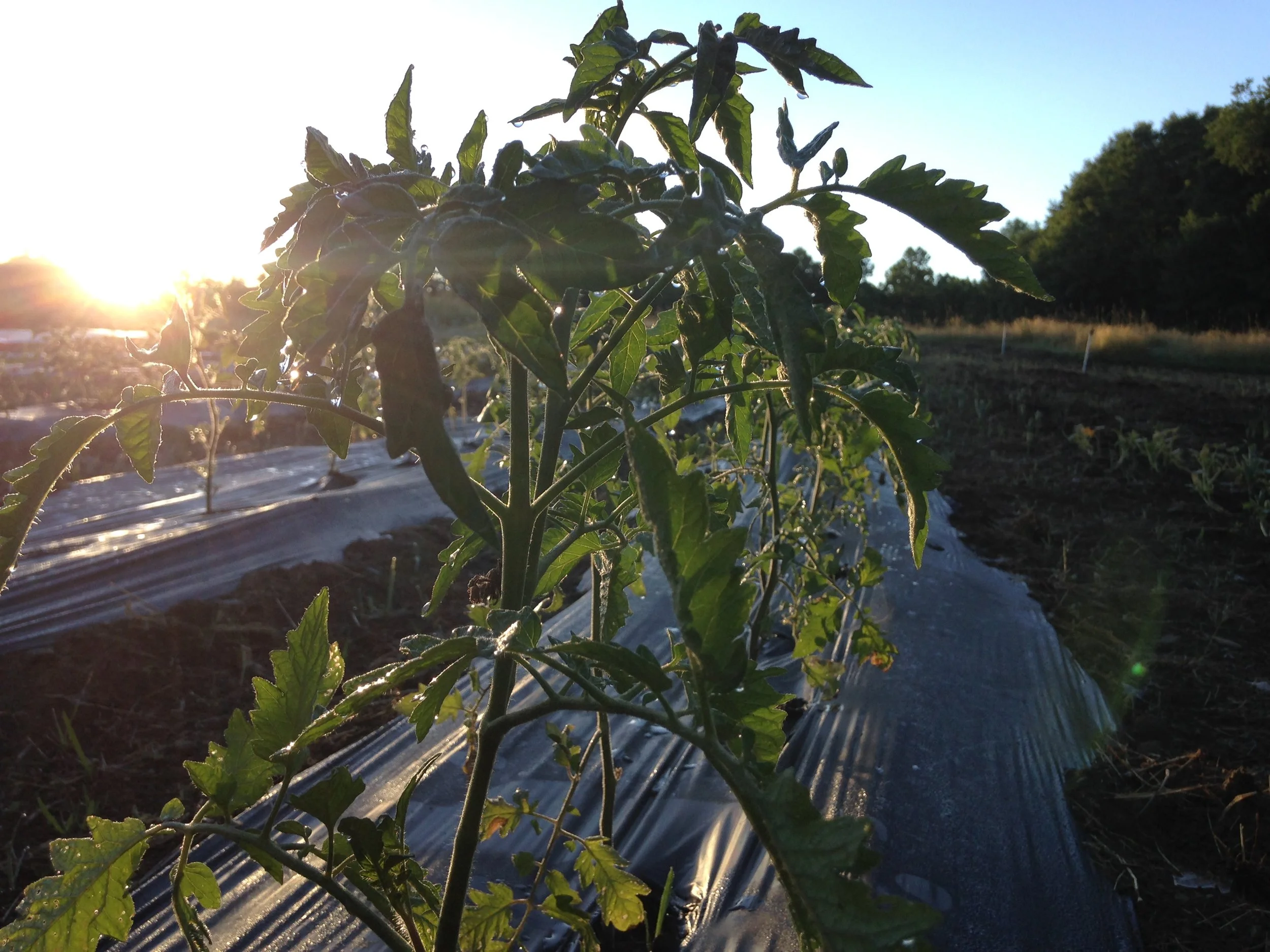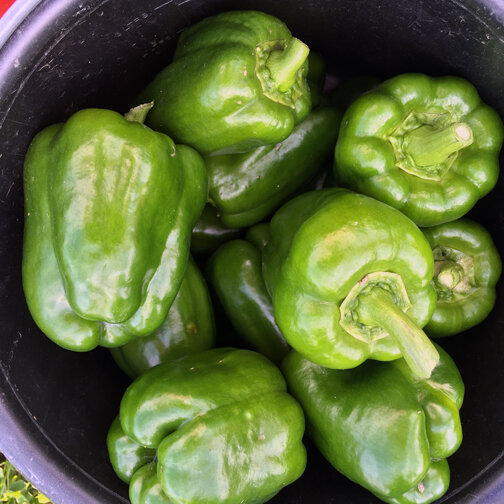It’s been a great tomato year on the farm. These are different varieties of artisan tomatoes. The bucket on the far right is chocolate cherry. The name comes from the dusky purple color, not the taste. They have a low-acid, earthy flavor.
A woman at the farmers market once said we were the farm with all the “weird stuff.” We’re proudly living up to that reputation this year, with dragon’s tongue beans, and purple beans that do a little hocus-pocus when cooking in the pot. We’ve got curious-looking black radishes and watermelon radishes. And the tomatoes around here are totally freaky. Chocolate cherry, metallic pink, neon yellow, green, black and orange and yellow cherry tomatoes dangle like ornaments on the twisting vines.
Weird seems to work for us. In total this week, we’ll haul about 600 pounds of tomatoes (normal and weird) out of the gardens. It’s been a few years since we’ve had this kind of tomato harvest. The new deer fence, combined with the lean and lower method, landscape fabric, and straw all contributed to a great tomato year.
Now, if you’re picturing pristine, weed-free high tunnels and neatly-trellised outdoor rows, you must be thinking of a different farm. Things got wild again this season. Not as wild as in the past, thanks to the fabric and straw, but still, the casual observer would probably see a mess. Weird, wild mess or not, that plot is producing truckload after truckload of produce right now.
~ Stella





















































